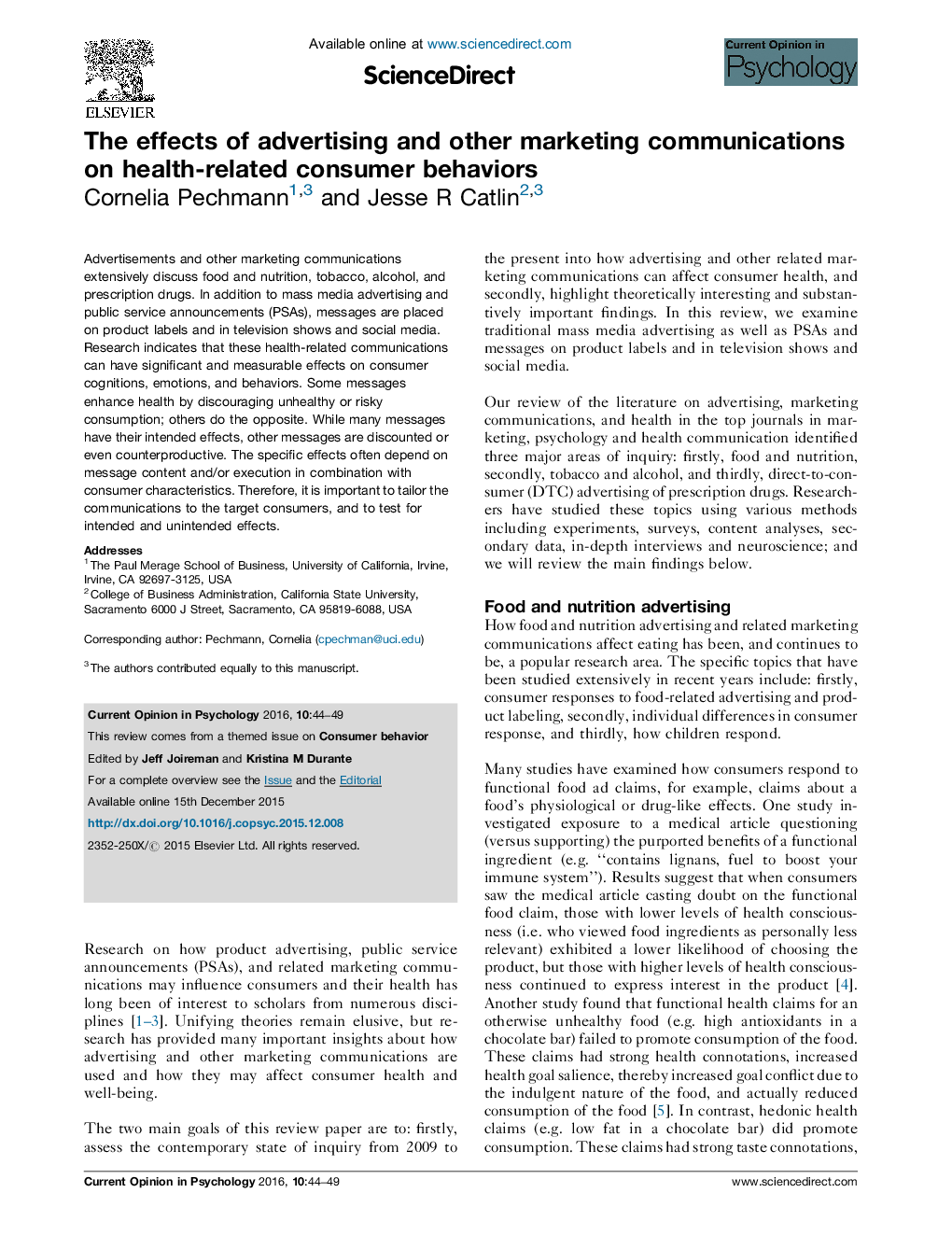| Article ID | Journal | Published Year | Pages | File Type |
|---|---|---|---|---|
| 879282 | Current Opinion in Psychology | 2016 | 6 Pages |
•Product claims, labels and package icons can reduce unhealthy food consumption.•Antismoking and anti-drinking fear appeals can help reduce product use.•Direct-to-consumer prescription drug ads can increase drug requests and sales.
Advertisements and other marketing communications extensively discuss food and nutrition, tobacco, alcohol, and prescription drugs. In addition to mass media advertising and public service announcements (PSAs), messages are placed on product labels and in television shows and social media. Research indicates that these health-related communications can have significant and measurable effects on consumer cognitions, emotions, and behaviors. Some messages enhance health by discouraging unhealthy or risky consumption; others do the opposite. While many messages have their intended effects, other messages are discounted or even counterproductive. The specific effects often depend on message content and/or execution in combination with consumer characteristics. Therefore, it is important to tailor the communications to the target consumers, and to test for intended and unintended effects.
